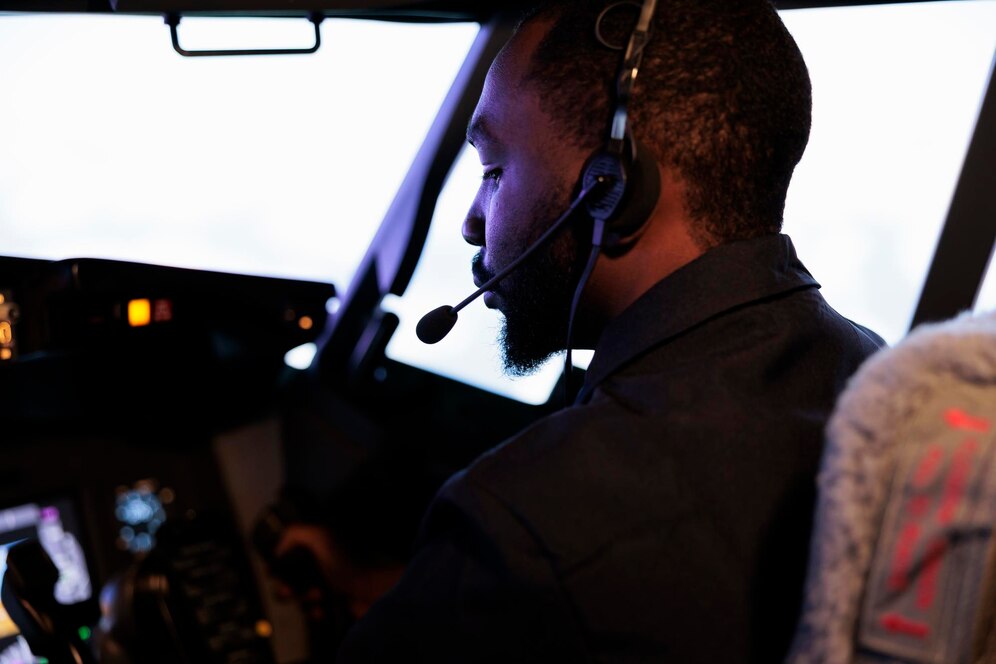The role of an air traffic controller is crucial in ensuring the safe and efficient movement of aircraft in Namibia’s airspace. If you have a passion for aviation, strong communication skills, and the ability to handle high-pressure situations, becoming an air traffic controller can be an exciting and rewarding career choice. In this blog, we will outline the steps required to pursue a career as an air traffic controller in Namibia, including the necessary education, training, and certifications.
Research the Air Traffic Control Profession:
Before embarking on the journey of becoming an air traffic controller, it’s important to familiarize yourself with the profession. Research the responsibilities and challenges of the role, including monitoring and directing aircraft movements, ensuring safety protocols are followed, and managing communication between pilots and ground control.
Obtain the Required Education:
To become an air traffic controller in Namibia, a minimum educational qualification of a high school diploma or equivalent is typically required. However, some countries may have additional educational requirements. It is recommended to pursue a degree in aviation, air traffic management, or a related field to enhance your knowledge and increase your chances of career advancement.
Meet the Age and Medical Requirements:
Air traffic control careers often have age restrictions. In Namibia, applicants must generally be at least 21 years old to apply. Additionally, you will need to undergo a thorough medical examination to ensure you meet the physical and mental requirements necessary for the demanding nature of the job.
Apply for Air Traffic Control Training:
The next step is to apply for air traffic control training programs offered by the Namibian Civil Aviation Authority (NCAA) or other relevant aviation training institutions. These programs provide comprehensive training in various aspects of air traffic control, including airspace management, navigation systems, radar operations, and communication procedures.
Complete Air Traffic Control Training:
Upon acceptance into an air traffic control training program, you will undergo rigorous training that combines theoretical knowledge and practical simulations. The training will cover topics such as air traffic control procedures, aircraft separation, weather awareness, and emergency management. You will also learn how to use specialized equipment, including radar systems, communication tools, and computer-based systems.
Gain Practical Experience:
After completing the initial training, you will be required to gain practical experience under the guidance of experienced air traffic controllers. You will work in an operational air traffic control environment, applying your knowledge and skills to real-world situations. This practical experience is essential for building confidence, honing your decision-making abilities, and developing situational awareness.
Obtain Required Certifications and Licensing:
To work as an air traffic controller in Namibia, you need to obtain the necessary certifications and licenses. The NCAA is responsible for issuing the Air Traffic Control License (ATCL), which demonstrates your proficiency and competence in the field. You may also need to pass additional assessments, such as language proficiency tests.
Continual Professional Development:
Air traffic control is a dynamic field that requires continuous learning and professional development. Stay updated with the latest technologies, regulations, and industry practices through training programs, workshops, and conferences. Engage in ongoing learning to enhance your skills and stay at the forefront of the profession.
Becoming an air traffic controller in Namibia is a challenging yet fulfilling career choice that offers opportunities to contribute to aviation safety and efficiency. By obtaining the required education, completing air traffic control training, gaining practical experience, and obtaining the necessary certifications and licenses, you can embark on a rewarding journey in this critical profession. Embrace the responsibilities, stay committed to ongoing learning, and enjoy the excitement of guiding skies as an air traffic controller in Namibia.
